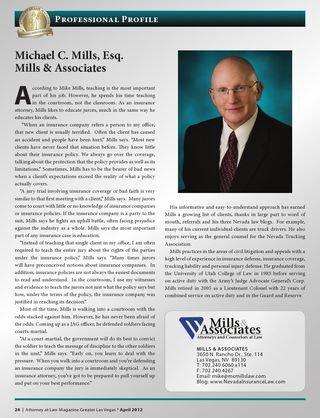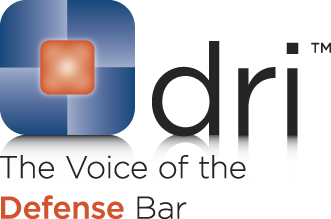In a recent post on our Nevada Insurance Law blog, we discussed how the person (usually a parent) who signs a minor’s driver’s license can be vicariously liable for the minor’s conduct. In the case of United Services Auto. Ass’n v. Crandall, 95 Nev. 334, 594 P.2d 704 (1979), the Nevada Supreme Court gives some direction as to how it will handle coverage in sticky parental liability cases.
In Crandall, the father had signed the driver’s license of his 16-year-old daughter. The daughter took the car of another without permission. While driving, she caused an accident in which three boys were killed. The boys’ representatives sued the father and the daughter.
While the case does not disclose these facts, it is probable that the insurance policy covering the car that the daughter was driving did not extend coverage to her or her father because of the non-permissive use. If there was no insurance available from that car, the father would then have turned to his own company, USAA, seeking coverage. USAA filed a declaratory judgment action hoping to avoid responsibility under its policy with the father.
USAA’s first argument focused on the policy’s omnibus clause. USAA said that this was not an accident “arising out of the . . . use of . . . any non-owned automobile.” It argued that since the father was not driving the car that he did not “use” the car under the terms of the policy.
Interpreting the policy, the Nevada Supreme Court decided that USAA must provide coverage for any automobile “use” which would place a legal obligation on the part of Mr. Crandall to pay damages and the parental liability statute, N.R.S. 483.200(2) imposed such an obligation.
The second argument of USAA was that it should not have to cover this loss because the Crandall daughter did not have permission to use the car she was driving. USAA said its coverage was limited to relatives where the driver’s use was with permission.
The court said that because the “permission” language was only in the section involving relatives, that the policy extended coverage to Mr. Crandall. Ultimately, the Supreme Court ordered USAA to cover Mr. Crandall.
This is a good example of how the parental liability statute works. However, it is also a good example of how the Nevada Supreme Court will interpret insurance policies. Nevada clearly follows the rule of policy construction that states: Any ambiguity in the terms of an insurance contract shall be resolved in favor of the insured, and against the insurer.
 Follow
Follow Email
Email


